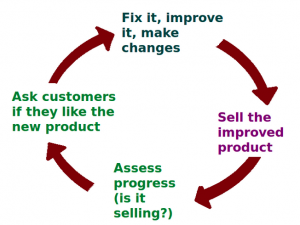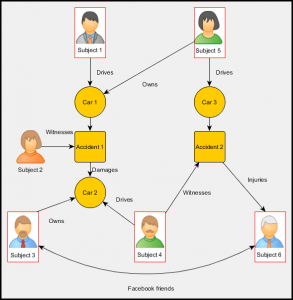The sophisticated and often nuanced manner in which leaders communicate is pivotal in forging or fracturing relationships with employees, colleagues, and stakeholders.
As a Dutch-American CEO and founder, I’ve painstakingly navigated the intricacies of direct and transparent communication, learning to intricately balance forthrightness with empathy. The Dutch are renowned for our stark directness—a characteristic often erroneously perceived as brusqueness in other cultural contexts. Many times in professional conversation, I felt the other person’s face portray the expression: “You said what?” even when my intentions were pure and good.
In the acclaimed Apple television series Ted Lasso, a memorably comic scene unfolds in a soccer locker room where the Dutch player Jan Maas bluntly criticizes his teammate’s subpar performance, claiming his own to be superior. This candid, yet truthful outburst prompts a more diplomatic teammate to intervene, saying, “Jan Maas is not being rude, he’s just being Dutch.”
When this episode aired, numerous friends and colleagues, with a hint of jest, forwarded me this scene, citing its uncanny resemblance to my own quintessentially Dutch manner of communication. It was both a humorous and enlightening moment, underscoring how my Dutch-influenced, inherent communication style is both one of my positive business edges and sometimes, a trait that leaves me at odds with more tactful approaches favored elsewhere.
Is there an equilibrium where forthrightness converges with empathy? Is it possible to be candid without crossing into the realm of abrasiveness? Direct communication is akin to a linear and pragmatic thought process— the most succinct pathway from one point to another. It’s unequivocal, lucid, and effective.
Geert Hofstede, the notable Dutch social psychologist, did a nice job capturing this notion: “The Dutch are direct and straight to the point; they say what they think.” It is an approach we relish. While this method is commendably transparent, at times, it is also misconstrued as tactless, insensitive, or even rude, particularly in cultures where a more circumspect form of communication prevails.
Conversely, I would propose that transparent communication, though similar to directness, incorporates a gentler, more contextually aware, and empathetic approach. It’s a communication style that not only values openness and honesty but also considers the reception of the message—a delicate balance of conveying the truth while being considerate of the listener’s emotions and perspectives.
It blends the need to efficiently and effectively communicate the perceived truth, but doing so in a manner that the recipient can better digest, accept, and act on the information as their feelings are left without too much damage.
In a professional setting, directness might manifest as bluntly informing someone of their presentation’s inadequacies. In a direct approach, the manager might say, “This presentation isn’t up to our standards. The data analysis is superficial, and the conclusions are not convincingly presented.”
Transparency, however, entails recognizing the effort behind the presentation before offering nuanced constructive criticism. In this case, the same manager might say, “I can see the effort and time you’ve put into this presentation, and your enthusiasm for the topic is evident. While the data analysis is a good start, it could benefit from a deeper exploration to strengthen your conclusions.”
Both methods are rooted in honesty, yet transparency forges a connection of understanding rather than constructing barriers of criticism.
Let’s imagine a scenario where you find a colleague’s communication with a customer not acceptable. As a Dutchman, I might say: “Your handling of that customer situation wasn’t great. You ignored the customer’s actual needs and just stuck to the script. You need to be more adaptable and focus on what the customer is really asking for.”
As I have learned to affect positive change, I would get better results when packaging the message differently. Here is an example: “I noticed how diligently you followed our standard procedures in your recent customer interaction, and that’s really commendable. Going forward, in my experience, if we would like to gain greater admiration, and thus future business, from clients, I believe we would benefit from being more flexible and really tune into what the customer needs. How about we prepare together prior to our next touchpoint with them to offer a more personalized approach to their customer service?”
My upbringing in a Dutch household instilled in me the value of “Zeggen waar het op staat“—speaking one’s truth without pretense. This background has led to misinterpretations in international business environments, where straightforwardness was perceived as abrasive. The key lesson here is the imperative of understanding and adapting to the diverse cultural dimensions of communication.
In her book Radical Candor, Kim Scott proposes a communication strategy that harmoniously blends directness with compassion. According to Scott, the secret to success is “communicating directly while caring personally.” This approach, though not instinctual for some—especially for those from cultures with ingrained directness—is pivotal for effective leadership.
Achieving this balance begins with empathy. Comprehending the backgrounds, challenges, and aspirations of those we communicate with can profoundly transform our approach.
Next in the process is displaying clarity when articulating expectations and feedback. Finally, it requires active listening—genuinely absorbing and valuing the other person’s perspective, so you may adjust the directness of your communication in real time and receive their honest consideration of your message.
In essence, it means articulating our thoughts while being mindful of their interpretation. It’s about conveying honesty without inflicting harm. At work, this approach fosters enhanced relationships, nurtures trust, and bonds teams more effectively.
Let’s imagine this scenario: a team leader is addressing a multicultural team comprising members from different ethnic backgrounds. The team recently missed a project deadline. The leader might begin the meeting by acknowledging the diverse strengths, styles, and perspectives each team member brings, respecting their cultural and professional backgrounds.
The leader then addresses the missed deadline honestly but thoughtfully: “I know we all worked hard on this project, and your dedication is evident. However, for us to miss a deadline is not acceptable and it impacts our team’s performance, plus we are letting other teams down who depend on us. Let’s openly discuss what challenges we faced and how we can support each other better in the future. This is a learning opportunity for us all to grow and succeed together.”
For someone with a Dutch background (and the Dutch are not the only ones . . . you know who you are), where straightforwardness is almost culturally imperative, the journey towards “radical candor” is both challenging and enriching. It entails embracing the transparency inherent in speaking one’s truth while adding a dimension of care to ensure the message is not just communicated but also respected and valued.
As leaders, we must transcend the limitations of our inherent cultural communication styles while honoring the inherent strengths. Whether hailing from a culture that honors directness, or one that favors subtlety, our objective remains unequivocal: to communicate in a manner that is both forthright and considerate.
As we navigate the complexities of global business, learning the art of expressing ourselves effectively and empathetically is not merely a skill to be acquired—it’s essential.
(8)










